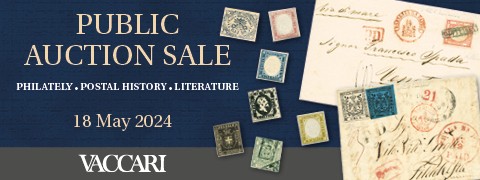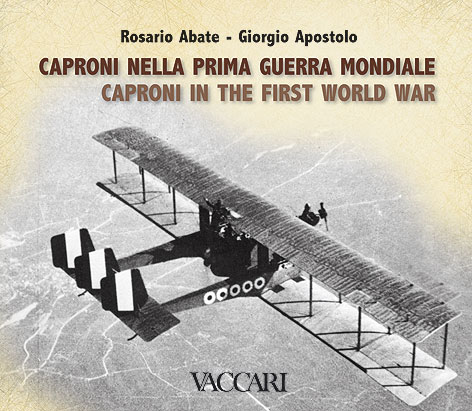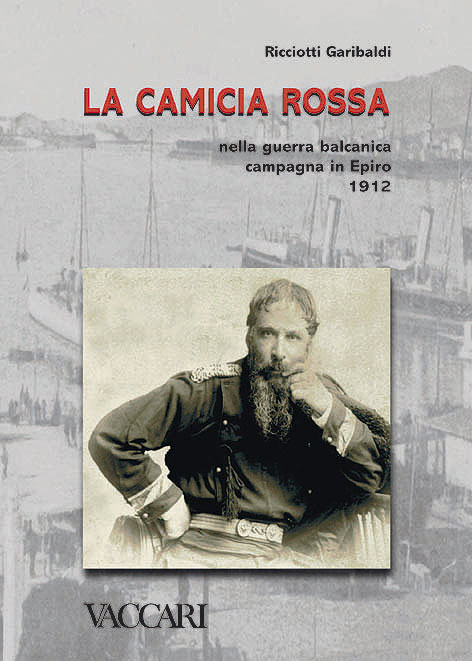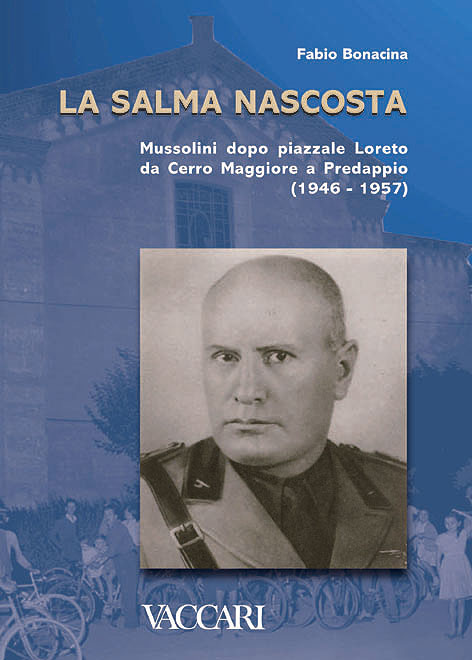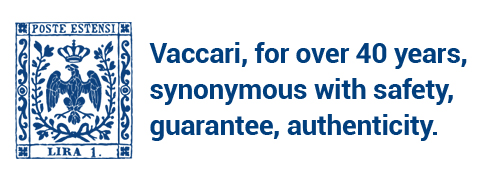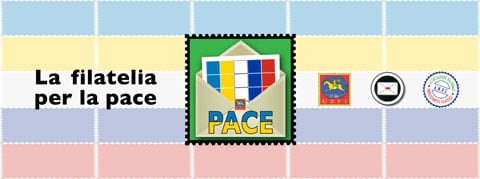Made in Vaccari

Books published by our House
shown by series
meeting History
300 pp. - 12 colour tables - 175 b/w ill. - fine art quality paper - format cm 24x21 - hardbound in colour - printed 2010
series "Meeting History"
Italian and English text
The most significant milestones in the development of Italian bomber aircraft, a celebration of Gianni Caproni, the foresighted constructor of those early wings, synonymous with "strategic bombing".
The complete history of this complex all-Italian aircraft from the design phase to the completion of the prototype, from the results of the first test flights until acceptance by the military administration, continuing later with the demanding phase of national production and concluding with the operational service of the various versions. In the most organic presentation possible, an examination was made of all the most important facts which led to the creation and development of these aeroplanes, and all their individual technical characteristics, together with an ordered study of the production figures.
Great emphasis was placed on the photographic documentation, in the main previously unpublished, and which, better than any document, illustrates the evolution of the Caproni biplane and triplane bombers.
Constant and fundamental support was provided by the Caproni Family, who placed documents and photographic material at disposition.
The text and the original structure of the work, published in 1970, have been in part reworked or modified, and now incorporates some new sections, such as an English translation, the replacement of many illustrations, updated captions, and a colour photographic appendix.
The volume appears in the period of the major celebrations of the 150 years of Italian Unity, and the 1915-1918 war is considered by many experts to be the fourth war of independence. However, research works like this stand apart from simple anniversaries, and contribute to the recording of the design and entrepreneurial capabilities of a man like Gianni Caproni, born at Arco, in the Trentino, territory then in the possession of the Austro-Hungarian Empire, and who elected to become Italian and make his contribution to the victory of the Tricolour.
CONTENTS
Preface by Giovanni, Maria Fede and Umberto Caproni from Taliedo
Foreword by Maurizio Pagliano
Author's note
Colour plates
Caproni 300 HP
* The concept of strategic bombing
* The first Caproni enter into action
* 1916: deep bombing raids
* The third year of war
Caproni 450 HP
* More power for the bombers
* Technical data of the Caproni 450 HP
* 1917: raids over Pola and Cattaro
* Target: Vienna
* Caproni built in France
* Derivations from the Ca.3 until 1926
Caproni 600 HP
* Programmes of international co-production
* 1918: the victory
Other users
* The Caproni of the Regia Marina
* Caproni on the Western front line
* The American Northern Bombing Group
* American pilots at Foggia
* Tri-motors in the re-conquest of Libya
The triplanes
* A giant of the era
The single engines
* From monoplane reconnaissance aircraft to triplane fighter
Flying the tri-motor
Bibliography
The authors
In Italian aviation circles, the First World War, which saw Italy enter the field on 24 May 1915 alongside the forces of the Triple Entente against the Central Empire, brings to mind above all two types of aircraft, the S.V.A. and the Caproni. The first, as will be recalled, was a reconnaissance and light bomber biplane designed by ingegneri Umberto Savoia and Rodolfo Verduzio and manufactured by Ansaldo, which entered service with operational units at the beginning of 1918. The second, with its characteristic tri-motor formula, was conceived and produced by ingegner Gianni Caproni, and became synonymous with strategic bombing, a definition which must, however, take account of the technological and doctrinaire parameters of the era.
This volume, written by Giorgio Apostolo and Rosario Abate, two established experts in the sector, describes the history of this complex all-Italian aircraft from the design phase to the prototype, from the results of the first test flights until acceptance by the military administration, then the demanding phase of national production and the operational service of the various versions. Published for the first time in 1970, it is re-launched after some forty years in a new edition promoted by the Vaccari publishing house which, amongst other projects, is engaged in reissuing works which for some time have not been available from libraries or publishing companies.
In my second forty years of activity in the editorial field I continue to demand of the authors the application of some basic principals which have always guided me through the profession, and which can be summed up as: intellectual honesty, knowledge of the subject, balanced opinions, and civility in terms of humans relationships. Assumed are the ability to write, and the desire to be read. I should add that in works of a technical nature like this there is no space for ideological interpretations of any kind; it is the numerical data that assumes overwhelming value, and this must be the foundations for a realistic picture of the situation. These are important characteristics, which are distinguishing features of the books with the signatures of Apostolo and Abate.
The volume appears in the period of the major celebrations of the 150 years of Italian Unity, and the 1915-1918 war is considered by many experts to be the fourth war of independence. However, research works like this stand apart from simple anniversaries, and contribute to the recording of the design and entrepreneurial capabilities of a man like Gianni Caproni, born at Arco, in the Trentino, territory then in the possession of the Austro-Hungarian Empire, and who elected to become Italian and make his contribution to the victory of the Tricolour.
There is a letter, reproduced in its original English in the book, dated 11 February 1919, and addressed to Inginiere [sic] Caproni: "My Dear Sir, in the name of the American Expeditionary Forces, I desire to express to you our appreciation of all that you have accomplished in the realm of the Allied aviation during the war. Your name is of course well known to all of us as an inventor of marked genius, but will be especially remembered by those officers with whom you came in contact on account of the sympathetic understanding and friendship which you always displayed toward the United States. Your untiring efforts and unfailing interest were of the greatest help to us in the development of our Air Service.
I am sure that I voice the sentiments of all when I say to you that among our officers and men you will ever find in the United States the same warm welcome and the same friendship which you have shown to us in your own land of Italy".
It was signed by General John Joseph Pershing, Commander in Chief of the American Expeditionary Forces in Europe.
Giorgio Apostolo became interested in aviation in 1950 launching an intensive career which continues to these days. A contributing editor of several aerospace journals, he has authored many publications, books and serials. For many years he edited the historical magazine «Aerofan» and he is owner of a specialized publishing house.
FREE the miniature sheet
with the stamps of
100 YEARS FROM THE FIRST FLIGHT
IN ITALIA
1908-1914
604 pp. - 128 tables with b/w ill. - format cm 21x29.7 - hardbound in colour - printed 2009
series "Meeting History"
Italian text
ALSO AS FREE BOOK (class B)
with update notes, with references to the Catalogue of "Aerofilia italiana", and errata by Fiorenzo Longhi
The work written by Mario Cobianchi, pioneer of Italian aviation, has been updated and enriched thanks to the several comments and the errata, included as foot notes, by Fiorenzo Longhi, one of the masters of Italian Aerophilately.
The volume by Cobianchi, published in 1943 and difficult to be found since long, "encyclopaedia" about the pioneering period of flight in Italy, is rich in information and documents gathered by the author himself, rare and historical illustrations of air tracks, drill grounds, postcards and photographs, flight attempts and experiments, aviation competitions and shows, flight forerunners, aircrafts.
It describes, day by day, all the aviation events of the pioneering period, whose end is internationally fixed in 1914, with dates and names of flight competitions, pilots and winners, flight licences of Italians, both military men and civilians, position in Europe, aircraft building factories, heroic experiments, pioneers' accidents (unfortunately some deadly).
CONTENTS
Foreword
* 1908-1909 - Today, we will fly
* 1910 - The beginnings of aviation in Italy
* 1911 - The Italian military aviation starts gaining ground
* 1912 - The fervent aviation activity for the war in Libya
* 1913 - The great flights
* 1914 - The wonderful air trips
* 1904-1914 - The different aviation activities
NELLA GUERRA BALCANICA
CAMPAGNA IN EPIRO 1912
260 pp. - b/w and colour photographs of the time - format cm 15x21 - softbound - printed 2007
Table, in colour, with the map representing the operations of the Italian-Greek legion and of the battle in Drisko
series "Meeting History"
Italian text
ALSO AS FREE BOOK (class A)
IN THE BALKAN WAR
CAMPAIGN IN EPIRUS 1912
With the cooperation of Annita Garibaldi Jallet and of the Museum of Villa Garibaldi in Riofreddo (Rome).
Many thanks to the National Committee for Celebrations of the Bicentenary of Giuseppe Garibaldi's birth.
Foreword by Annita Garibaldi Jallet.
Garibaldis and their topicality, conversation with Annita Garibaldi Jallet by Fabio Bonacina.
Introduction by Bruno Crevato-Selvaggi.
On the occasion of the birth bicentenary of Giuseppe Garibaldi, the "hero of the two worlds", a volume written by his son, Ricciotti Garibaldi. New edition of the work published in 1915, in which the author describes the military background and the participation of the Italian volunteers under his command in the first Balkan war in Greece.
It was in the operations towards Ioannina that Ricciotti's "redshirts" took part, and particularly in the battle in Drisko (small town in the area). Subject of the volume the antecedent facts, the battle in Drisko, the following events, the epilogue, that is the adventure of "redshirts" in Epirus in 1912. Moreover, a whole chapter is devoted to the Italian Red Cross, who accompanied and assisted the Redshirts with their precious work, with the help of the Greek Blue Cross too. Constance Garibaldi, Ricciotti's wife, and Inspector of the Red Cross, in a long letter tells about some particularly touching episodes.
The author, who led the campaign, and is therefore also protagonist of the story, writes in the first person a mix between an account and memoirs, quite a technical report accompanied by many documents which testify the happenings told (one of the reasons which led the editor to publish a new edition of the work). There is the romantic myth of Hellenism; the civilian myth of the volunteer "redshirts"; comments on the volunteer troops; the sense of comradeship but also of boldness.
Thanks to this volume, readers can now realize what kind of war it was, the extent of armed forces and fire, but also the "spirit" of that campaign. A picture of an event which remained in Italian memory.
CONTENTS
* Foreword, Annita Garibaldi Jallet
* Table, in colour, with the map representing the operations of the Italian-Greek legion and of the battle in Drisko
* Garibaldis and their topicality, conversation with Annita Garibaldi Jallet, Fabio Bonacina
* Introduction, Bruno Crevato-Selvaggi
* Dedication, Ricciotti Garibaldi
* I - Greece and Italy
* II - Greece
* III - Preparations in Italy
* IV - From Rome to Athens
* V - Some incidents
* VI - From Athens to Metzovo
* VII - Romas Column
* VIII - Battle in Drisko
* IX - The field hospital
* X - From Drisko to Athens
* XI - Accountancy
* XII - Documents
* XIII - Notes of promotions
* XIV - Note of volunteers
* XV - Summary note of jobs
* XVI - Alphabetical note
From 1866 he distinguishes himself on the battlefields. When his father dies, in 1882, he wants to collect his moral heritage, the values of military voluntary service and of philhellenism which belonged to Garibaldian tradition. It is Greece which gives him the possibility to revive the tradition of Garibaldi's "Redshirts", already from 1897. The General Ricciotti succeeds in realising his true inclination: at the head of new Garibaldian volunteers, he creates a new military tradition, which intervenes in favour of peoples' freedom, and pays attention to the values of heroism and sacrifice in the name of a nation.
He dies in Riofreddo (Rome) in 1924.
HISTORY BOOK
MUSSOLINI DOPO PIAZZALE LORETO
DA CERRO MAGGIORE A PREDAPPIO
(1946-1957)
192 pp. - b/w ill. - format cm 15x21 - softbound - 2nd ed. 2007 - series "Meeting History"
Italian text
ALSO AS FREE BOOK (class C)
MUSSOLINI AFTER PIAZZALE LORETO
FROM CERRO MAGGIORE TO PREDAPPIO
(1946-1957)
29/30 August 1957 - 2007
From Cerro Maggiore to Predappio: Benito Mussolini's last "journey"
Where did Benito Mussolini's corpse disappear after Piazzale Loreto?
For eleven years the Italian Republic kept it hidden from enemies and Neofascists, using the monastery of Capuchin friars in Cerro Maggiore (Milan).
The author, Fabio Bonacina, carried on a useful investigation to follow the events through documents and several testimonies from people who lived those years as protagonists or simple witnesses, and through the many postcards with the images relevant to those events.
CONTENTS
* Last days of life
* The "show" in piazzale Loreto
* The problem of the corpse
* The return in Milan
* Padre Carlo from Milan, as if from Cerro
* The solution is in the monastery of Cerro Maggiore
* The years of the secret (1946-1957)
* The corpse given to the family
* A heavy inheritance to handle
* Padre Carlo's diary
* A monastery and its growth
* With the guests of the Central hotel
* Notes
* Bibliography
Il saggio di Fabio Bonacina narra le vicende della salma di un uomo, per vent'anni al centro della storia d'Italia, che giunse, dopo le drammatiche vicende di Giulino e di piazzale Loreto, in un piccolo e, diciamolo pure, sconosciuto ai più, paese della provincia milanese.
Il libro è già alla sua seconda edizione a dimostrazione che le vicende narrate hanno suscitato un interesse che ha travalicato i confini locali.
Le recensioni alla prima edizione hanno trovato spazio sui media nazionali e il saggio è stato citato nella bibliografia di altri lavori. Un esemplare del libro è conservato alla Biblioteca del Congresso degli Stati Uniti. Persino una pièce teatrale si è ispirata alle vicende narrate nel libro.
In effetti la ricerca ha il pregio di aver colmato un vuoto storico e a oggi rimane l'unico testo che ricostruisce in maniera esemplare e minuziosa le vicende della «Salma nascosta».
Esso è quindi strumento indispensabile allo studioso, ma la sua lettura è di sicuro interesse anche al semplice appassionato di storia che avrà modo di conoscere una vicenda che a tratti assume i contorni di un giallo.
Ormai i protagonisti di quegli anni sono quasi tutti scomparsi. Nel suo piccolo, come uno scrigno, questo lavoro raccoglie frammenti di vita di uomini semplici, come il fotografo Igino Braghin o la balia Enrichetta Rotondi. Uomini e donne che non recitarono sul palcoscenico della storia, ma più semplicemente nella quotidianità delle loro famiglie e del loro paese. Ricordarli è un doveroso atto di affetto della nostra Comunità. Ecco perché questo non è solo il libro della salma di Mussolini, ma anche il loro.
Antonio Lazzati
Sindaco di Cerro Maggiore (Milano)
luglio 2007
He has been awarded the prize by Usfi (Italian Philatelic Press Union) in 2010, he has obtained the award for journalism by the Town of Riccione in 2006, and the oscar for philately by Circolo filatelico numismatico reggiano in 2002.
For this publisher he has written the books "Propaganda con i denti - Il francobollo come mezzo di comunicazione nelle relazioni internazionali, il secondo dopoguerra"; "La salma nascosta - Mussolini a Cerro Maggiore dopo piazzale Loreto (1946-1957)", published in two editions; "Giovanni Paolo II - Viaggi di speranza - I francobolli del mondo testimoniano le visite di Papa Wojtyla", translated into English and German (English edition "John Paul II - Visits of hope - World stamps witness the travels of Pope Wojtyla"); "Campioni del mondo - I francobolli dei Paesi organizzatori e vincitori dei Mondiali di calcio 1930-2006"; "Buon Natale! Il libro-album per la raccolta dei francobolli italiani sul Natale 1970-2010"; "Habemus Papam. Tutti i Papi da Francesco a Pio XII. Il libro-album dei francobolli italiani"; "Campioni del mondo 2 - I francobolli dei Paesi organizzatori e vincitori dei Mondiali di calcio 2010-2014".
- Estero e letteratura per l’asta
Anche queste macrocategorie nella vendita che la società... - Asta. Il Regno e poi...
Tra i 1.438 lotti che la società Vaccari metterà in... - Quei capitoli molto… storici
Occupazioni, uffici all’estero, colonie e posta militare... - In asta, il 18 maggio
Sono 1.438 i lotti che transiteranno dalla sede della...
All rights reserved



